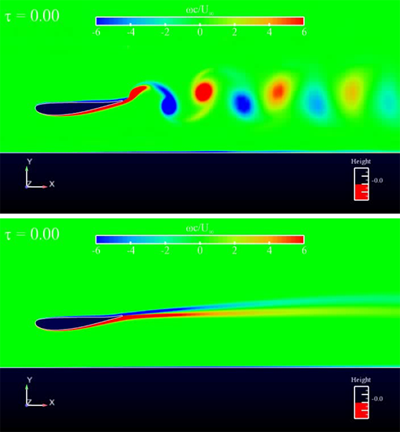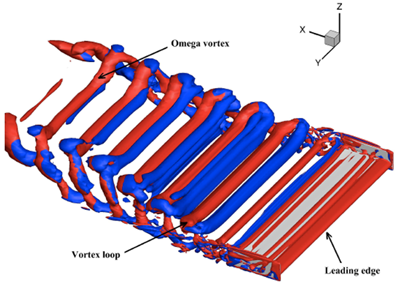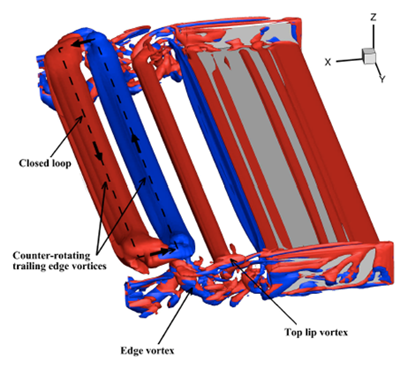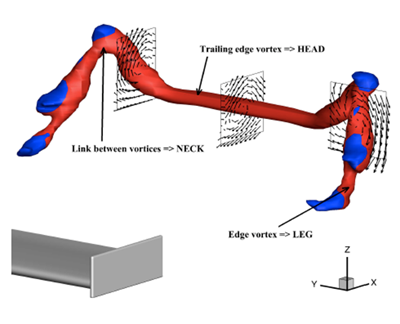Wings in pitching motion can reach very large incidences, often overshooting the static stall angle. In those cases, the unsteady motion can be beneficial to the aerodynamic performance of the wing. Lift can be enhanced and stall can be delayed to higher angles of attack. That process is known as dynamic stall.
The dynamic stall process is not limited to an overshoot of lift at incidences above the static stall angle. Exceeding that angle results in a leading edge vortex being formed (dynamic stall vortex) and convected downstream. The vortex induces an even lower pressure region on the suction surface, further increasing the lift but also creating a large pitching-down moment and increased drag. Once the dynamic stall vortex is shed into the wake, the wing stalls abruptly due to excessive separation on the suction surface. During the downstroke, the flow will reattach. The unsteady separation process is therefore a requirement for dynamic stall to occur.
Hybrid grid. Structured blocks containing airfoil and ground
Moving block with airfoil


Vortex shedding at high frequencies (k ≥ 2)
Flapping wake at low-mid frequencies

Grid refinement study
Stationary wing: RANS, DES at h/c=0.43, h/c=0.16, h/c=0.09




